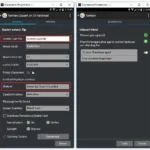Harbor freight tools car jacks offer an affordable entry point into the world of automotive lifting. Whether you’re a weekend warrior or a seasoned mechanic, understanding the nuances of these jacks is crucial for safe and effective vehicle maintenance. This guide dives deep into the world of harbor freight car jacks, exploring their types, features, safety precautions, and much more.
Understanding the Different Types of Harbor Freight Car Jacks
Harbor Freight offers a variety of car jacks, each suited to different needs and applications. Let’s explore the most common types:
- Trolley Jacks: These are the workhorses of the garage, offering excellent stability and lifting capacity. Ideal for heavier vehicles, trolley jacks provide smooth and controlled lifting.
- Scissor Jacks: Compact and lightweight, scissor jacks are perfect for emergencies and quick tire changes. They are typically included in a vehicle’s car flat tools kit due to their portability.
- Bottle Jacks: Known for their compact size and high lifting capacity, bottle jacks are versatile tools for various lifting tasks. They are particularly useful in confined spaces.
- Floor Jacks: Similar to trolley jacks but often with a lower profile, floor jacks are suitable for low-clearance vehicles.
Choosing the Right Car Jack for Your Needs
Selecting the appropriate car jack depends on factors like the weight of your vehicle, the frequency of use, and your budget. For occasional use, a scissor jack or bottle jack might suffice. However, for regular maintenance and repairs, a trolley jack is a worthwhile investment.
Safety First: Using Harbor Freight Car Jacks Safely
While harbor freight car jacks are valuable tools, safety should always be the top priority. Here’s a checklist to ensure safe operation:
- Stable Surface: Always use the jack on a level, solid surface. Avoid soft ground or uneven terrain.
- Check Capacity: Ensure the jack’s weight capacity exceeds your vehicle’s weight. Overloading a jack can lead to catastrophic failure.
- Jack Stands: Never work under a vehicle supported solely by a jack. Always use jack stands for added safety. Position them correctly under designated lifting points.
- Emergency Brake: Engage the emergency brake before lifting the vehicle. This prevents the car from rolling.
- Wheel Chocks: Use wheel chocks to secure the wheels that remain on the ground. This adds another layer of safety.
Maintaining Your Harbor Freight Car Jack
Proper maintenance ensures the longevity and reliability of your car jack. Here are some key maintenance tips:
- Regular Lubrication: Keep moving parts lubricated with appropriate grease or oil.
- Inspection: Regularly inspect the jack for signs of wear and tear, such as cracks, bends, or leaks.
- Proper Storage: Store the jack in a clean, dry place to prevent corrosion.
Extending the Lifespan of Your Car Jack
Regular maintenance can significantly extend the lifespan of your car jack. Keeping the jack clean and lubricated prevents rust and ensures smooth operation.
“Regular inspection and maintenance are crucial for the safe and effective operation of any car jack,” says John Miller, a certified automotive technician with over 20 years of experience. “Investing a little time in maintenance can prevent costly repairs and ensure the longevity of your equipment.”
Harbor Freight Car Jack Accessories
Several accessories can enhance the functionality and safety of your harbor freight car jack. Jack stands, as mentioned earlier, are essential. Other helpful accessories include jack pads to protect your vehicle’s undercarriage and creeper seats for comfortable working under the car. car wheel tool to lift change a tire
What are some essential car jack accessories?
Essential accessories include jack stands, jack pads, and wheel chocks. These items significantly enhance safety and protect your vehicle. Having a well-stocked best cars tool kit is crucial.
Conclusion
Harbor freight tools car jacks provide a cost-effective solution for various automotive lifting needs. Understanding the different types, adhering to safety guidelines, and performing regular maintenance will ensure safe and efficient operation. By following the tips outlined in this guide, you can confidently tackle automotive tasks and keep your vehicle in top condition. Don’t forget to check out our comprehensive guide on car workshop tools and equipment for more information.
FAQ
- What is the weight capacity of a typical harbor freight trolley jack?
- How do I choose the right jack pad for my vehicle?
- Where can I find replacement parts for my harbor freight car jack?
- Are harbor freight car jacks suitable for professional use?
- How often should I lubricate my car jack?
- What are the signs of a failing car jack?
- How do I properly store my car jack?
Common Scenarios and Questions
- Scenario: You’re on the side of the road with a flat tire.
- Question: Is my scissor jack strong enough to lift my SUV?
- Scenario: You’re changing your oil in the garage.
- Question: Where are the correct jack points for my car?
- Scenario: Your car jack feels unstable.
- Question: What should I do?
Further Resources and Related Articles
- Check out our article on the top car tool kit for recommendations on essential tools for your vehicle.
Need further assistance? Contact us via WhatsApp: +1(641)206-8880, Email: [email protected] or visit our office at 910 Cedar Lane, Chicago, IL 60605, USA. We offer 24/7 customer support.


